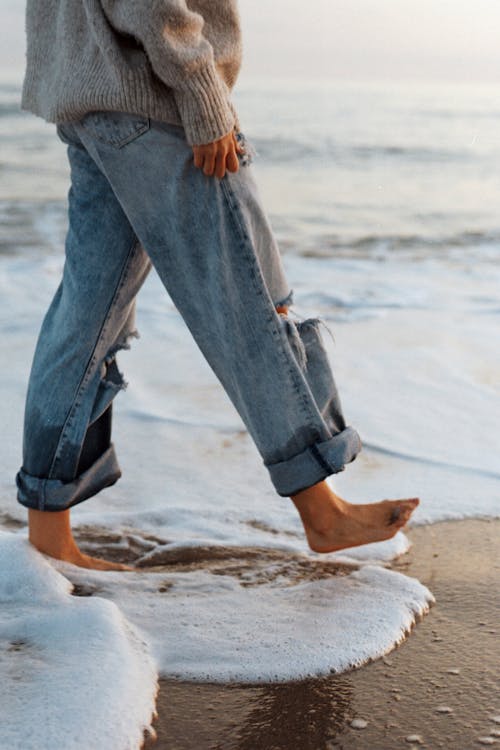A breath of fresh air
A breath of fresh air
It is easy to find yourself stuck in a loop of watching your favourite influencers 1-minute videos of the highlights in their life, and wishing you knew how to be happy and live you’re so called ‘best life’. How to let go of your anxiety, and just co- exist with the world around us. I am guilty for this. Social media and technology have become far too accessible and taken away the importance of our human connection with nature. In today’s blog, we will be exploring the multiple benefits just 20 minutes outside per day has to our psychological well-being and with that, exploring easy and fun ways to incorporate this into our daily lives.

I remember my very first anxiety attack. I called my dad, who had suffered anxiety attacks at the around the same age as I was, experiencing mine. Out of all the things I thought he would say to calm me down, I definitely was not thrilled when he had told me to simply go on a walk outside. I guess he did almost make me laugh, so that’s a plus, right? I thought to myself “There is no way, in the midst of my absolute panic right now all he can think to tell me is to go for a walk”. But I suppose, by this point, I was willing to do anything. I soon found myself taking a walk outside. And surely enough, after just minutes of being outside, feeling the cold wind blow against my face with each deep breath he had instructed me to take in and actively listening out to hear the birds sing along with each other, I was feeling on top of myself again. I was extremely shocked by the way I had calmed myself down within minutes by simply taking a walk outside. However, it is no surprise when actively choosing to acknowledge and appreciate the outside world, we can remind ourselves of the bigger picture and begin breathing deep breaths and accepting our feelings and working through them with nature.
Mental Health Org explains “How much we notice, think about and appreciate our natural surroundings is critical in supporting good mental health and preventing distress”. You may be wondering how to practice this and use it in your everyday life. It’s as easy as actively trying to listen to the several different birds, and insects you hear surrounding you. Closing your eyes and allowing the sun to dance on your skin with each long breath taken in. Walking barefoot and allowing yourself to connect and ground yourself through nature. After my first anxiety attack, I had talked about above, I took the benefits of exposure to nature quite seriously and have found not once has it failed me in a time of need. Exposure to nature has been linked to lower risk of common mental health disorders like anxiety and depression and has been proven to significantly reduce cortisol levels otherwise known as our stress hormones in the body. Research into eco psychology also shows being outdoors and in nature can reduce high blood pressure and nervous system arousal along with improving your general mood and stimulating motivation.

I along with the majority of our population living in 2023, have found myself relying on social media and my phone in general far too much when experiencing things like anxiety to distract myself from what was going on internally. However, hyper connectivity to social media and technology has been linked over and over again, to a range of mental health disorders and can trigger much higher levels of anxiety and depression. That is why it is so extremely important to understand, though there are benefits to the connection it grants us to friends and family when not with physically with them, real-world connection can never be replaced and therefore it is in all of our best interests to replace our prolonged use of tech with actively choosing to connect with the outside world again like us humans are made to do.
The most amazing thing about research on the exposure of nature to our mental health, is that even indoor plants and trees on our suburban streets have quite a similar effect on our mental health as actually going out of our way to go into our blue and green spaces. Things like forests, canals, the ocean, woodlands and parks etc. This meaning, nature can be made available to nearly every single one of us no matter where we live or how far we are willing to initially start off with. If you are someone who reading this, feels it could be quite far out of your comfort zone, Mental Health Org also talks about the benefits watching nature documentaries has on our mental health also. There are a ton of ways to initially approach and get started on your journey of nature therapy.
Nature will never fail us and as humans it is important to recognise our connection with nature goes much further than we think. I challenge each and every one of you reading this, to set aside just 15 minutes today to take in and connect with nature. I challenge you, to count at least 3 different things you hear outside, smell, and feel. Maybe even put on your favourite music and count 10 deep breaths while closing your eyes and truly acknowledging how the wind feels through your hair or how the sun soaks into your skin. Just sit, and be one with nature, ground yourself. You deserve this. You deserve the company and support the outside world has to give you. Allow yourself to be granted with such a beautiful connection. I guarantee if you feel you’re ready to explore nature therapy it will not fail you.
J J Barnshaw
October 4th
References
Mental Health Foundation. (2021).
Lombardo, Catherine Negus, David Troy, Adam Nice, Chris O’Sullivan, Shari McDaid, Emily Wooster, Lucy Thorpe, Catherine Seymour, Antonis Kousoulis, Mark Rowland.









